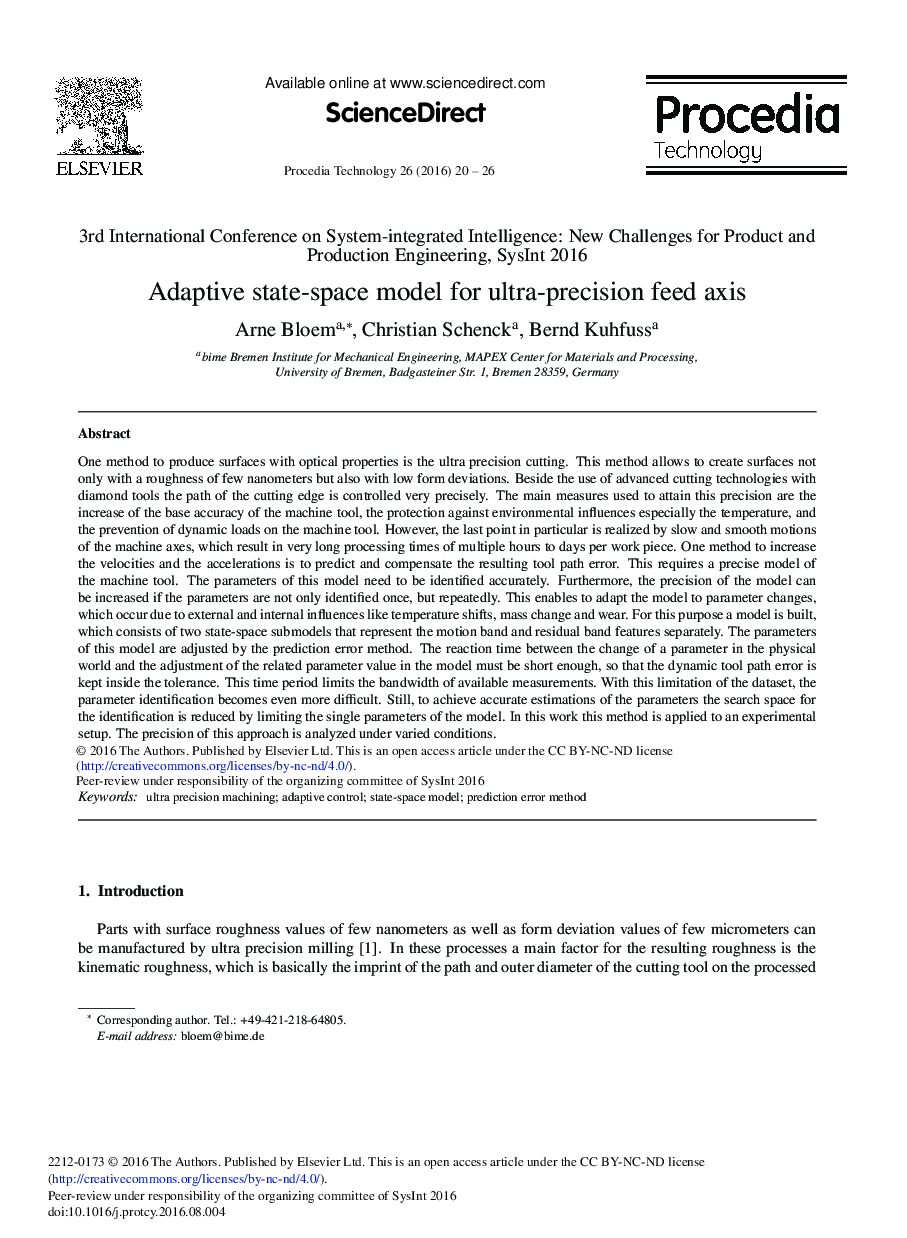| کد مقاله | کد نشریه | سال انتشار | مقاله انگلیسی | نسخه تمام متن |
|---|---|---|---|---|
| 4962428 | 1446615 | 2016 | 7 صفحه PDF | دانلود رایگان |
One method to produce surfaces with optical properties is the ultra precision cutting. This method allows to create surfaces not only with a roughness of few nanometers but also with low form deviations. Beside the use of advanced cutting technologies with diamond tools the path of the cutting edge is controlled very precisely. The main measures used to attain this precision are the increase of the base accuracy of the machine tool, the protection against environmental influences especially the temperature, and the prevention of dynamic loads on the machine tool. However, the last point in particular is realized by slow and smooth motions of the machine axes, which result in very long processing times of multiple hours to days per work piece. One method to increase the velocities and the accelerations is to predict and compensate the resulting tool path error. This requires a precise model of the machine tool. The parameters of this model need to be identified accurately. Furthermore, the precision of the model can be increased if the parameters are not only identified once, but repeatedly. This enables to adapt the model to parameter changes, which occur due to external and internal influences like temperature shifts, mass change and wear. For this purpose a model is built, which consists of two state-space submodels that represent the motion band and residual band features separately. The parameters of this model are adjusted by the prediction error method. The reaction time between the change of a parameter in the physical world and the adjustment of the related parameter value in the model must be short enough, so that the dynamic tool path error is kept inside the tolerance. This time period limits the bandwidth of available measurements. With this limitation of the dataset, the parameter identification becomes even more difficult. Still, to achieve accurate estimations of the parameters the search space for the identification is reduced by limiting the single parameters of the model. In this work this method is applied to an experimental setup. The precision of this approach is analyzed under varied conditions.
Journal: Procedia Technology - Volume 26, 2016, Pages 20-26
